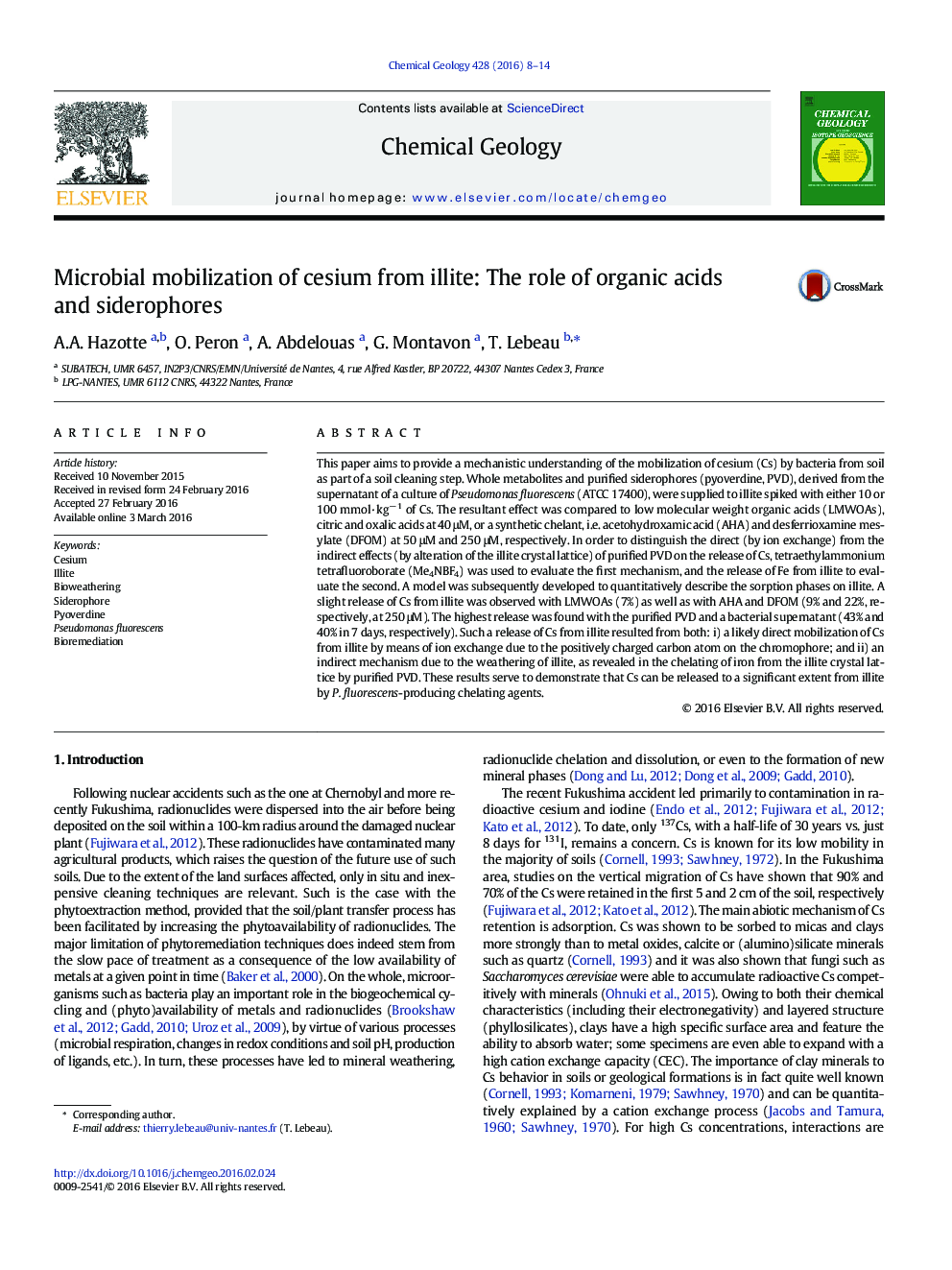| کد مقاله | کد نشریه | سال انتشار | مقاله انگلیسی | نسخه تمام متن |
|---|---|---|---|---|
| 6436111 | 1637546 | 2016 | 7 صفحه PDF | دانلود رایگان |
- Citric and oxalic acids have no effect on Cs mobilization from illite.
- Pyoverdine (PVD) from P. fluorescens is efficient on Cs release.
- P. fluorescens supernatant has a similar effect as PVD.
- Pyoverdine acts through direct (ion exchange) and indirect (illite weathering) mechanisms.
This paper aims to provide a mechanistic understanding of the mobilization of cesium (Cs) by bacteria from soil as part of a soil cleaning step. Whole metabolites and purified siderophores (pyoverdine, PVD), derived from the supernatant of a culture of Pseudomonas fluorescens (ATCC 17400), were supplied to illite spiked with either 10 or 100 mmol·kgâ 1 of Cs. The resultant effect was compared to low molecular weight organic acids (LMWOAs), citric and oxalic acids at 40 μM, or a synthetic chelant, i.e. acetohydroxamic acid (AHA) and desferrioxamine mesylate (DFOM) at 50 μM and 250 μM, respectively. In order to distinguish the direct (by ion exchange) from the indirect effects (by alteration of the illite crystal lattice) of purified PVD on the release of Cs, tetraethylammonium tetrafluoroborate (Me4NBF4) was used to evaluate the first mechanism, and the release of Fe from illite to evaluate the second. A model was subsequently developed to quantitatively describe the sorption phases on illite. A slight release of Cs from illite was observed with LMWOAs (7%) as well as with AHA and DFOM (9% and 22%, respectively, at 250 μM). The highest release was found with the purified PVD and a bacterial supernatant (43% and 40% in 7 days, respectively). Such a release of Cs from illite resulted from both: i) a likely direct mobilization of Cs from illite by means of ion exchange due to the positively charged carbon atom on the chromophore; and ii) an indirect mechanism due to the weathering of illite, as revealed in the chelating of iron from the illite crystal lattice by purified PVD. These results serve to demonstrate that Cs can be released to a significant extent from illite by P. fluorescens-producing chelating agents.
Journal: Chemical Geology - Volume 428, 15 June 2016, Pages 8-14
